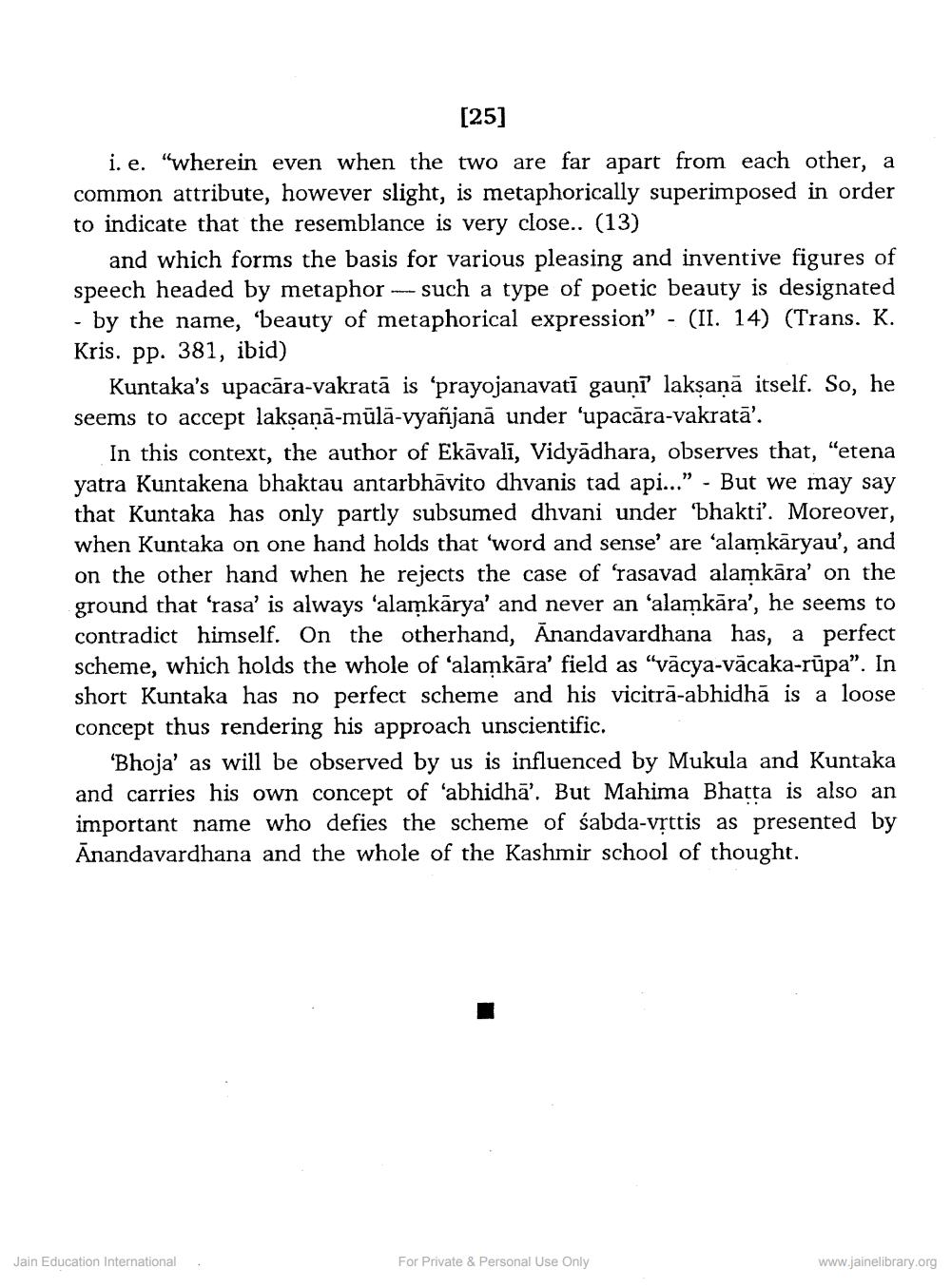________________
[25]
i. e. "wherein even when the two are far apart from each other, a common attribute, however slight, is metaphorically superimposed in order to indicate that the resemblance is very close.. (13)
and which forms the basis for various pleasing and inventive figures of speech headed by metaphor - such a type of poetic beauty is designated - by the name, 'beauty of metaphorical expression" - (II. 14) (Trans. K. Kris. pp. 381, ibid)
Kuntaka's upacāra-vakratā is 'prayojanavatī gauni laksanā itself. So, he seems to accept laksaņā-mülā-vyañjanā under 'upacāra-vakratā'.
In this context, the author of Ekāvalī, Vidyādhara, observes that, “etena yatra Kuntakena bhaktau antarbhāvito dhvanis tad api...” - But we may say that Kuntaka has only partly subsumed dhvani under bhakti'. Moreover, when Kuntaka on one hand holds that 'word and sense' are ‘alamkāryau', and on the other hand when he rejects the case of 'rasavad alamkāra' on the ground that 'rasa' is always 'alamkārya' and never an ‘alamkāra', he seems to contradict himself. On the otherhand, Anandavardhana has, a perfect scheme, which holds the whole of ‘alamkāra' field as "vācya-vācaka-rūpa”. In short Kuntaka has no perfect scheme and his vicitra-abhidhā is a loose concept thus rendering his approach unscientific.
'Bhoja' as will be observed by us is influenced by Mukula and Kuntaka and carries his own concept of fabhidhā'. But Mahima Bhatta is also an important name who defies the scheme of śabda-vịttis as presented by Anandavardhana and the whole of the Kashmir school of thought.
Jain Education International
For Private & Personal Use Only
www.jainelibrary.org




